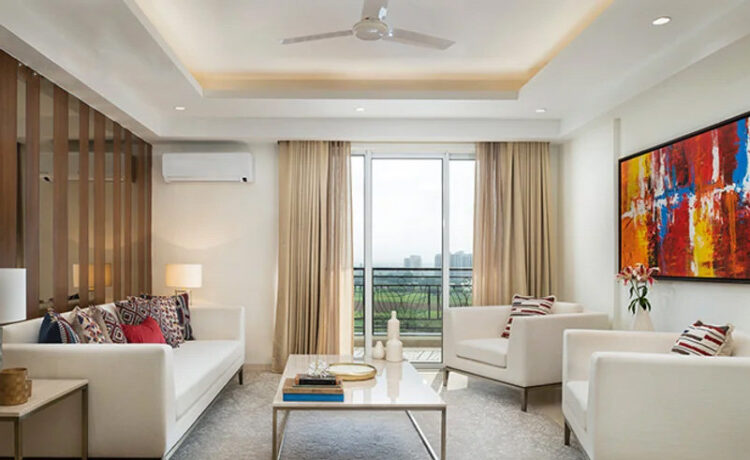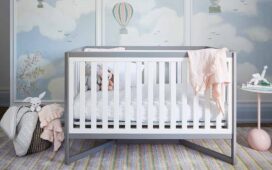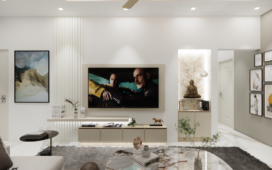Ensuring adequate natural light and ventilation is the most critical factor in creating a healthy home environment. Exposure to natural light helps regulate our circadian rhythms, improves mood, and boosts vitamin D production. When designing your home, consider maximizing window sizes and strategically positioning them to allow optimal light penetration. Additionally, incorporate sheer curtains or adjustable blinds to control the light entering the space throughout the day.
Proper ventilation is essential for maintaining a healthy indoor environment, and opening windows regularly allows fresh air to circulate, reducing the buildup of indoor pollutants and allergens. Consider further installing a ventilation system or using air purifiers to enhance air quality. Plants also improve air quality while adding a natural touch to your interior design.
Colour psychology
The colours we surround ourselves with impact our mood and emotional well-being. When selecting a colour palette for your home, you should consider the psychological effects of different hues. Soft, muted tones such as blues, greens, and earth tones promote relaxation and tranquillity. These colours are ideal for bedrooms and living areas where you want to create a calming atmosphere. Vibrant colours like yellow and orange energize and uplift the mood, making them suitable for home offices or exercise rooms. However, balancing and avoiding overwhelming the senses with too many bold colours is essential. Opt for a cohesive colour scheme incorporating soothing and refreshing tones to create a harmonious and balanced environment.
Ergonomic furniture
Investing in ergonomic furniture is crucial for maintaining good posture and reducing musculoskeletal issues. When selecting furniture for your home, prioritize pieces that provide proper support and promote healthy body alignment. Ergonomic office chairs are essential for those who work from home, as they help prevent back pain and strain associated with prolonged sitting. Choose a sofa and armchairs in the living room that offer adequate lumbar support and encourage a neutral spine position. Adjustable furniture, such as height-adjustable desks and reclining chairs, is adaptable to individual needs. Remember to consider the layout of your furniture to ensure efficient flow and ease of movement within the space.
Biophilic design
Biophilic design is an approach that incorporates natural elements into the built environment to promote a connection with nature. Studies show that exposure to nature reduces stresses, improves cognitive function, and enhances overall well-being. Incorporating biophilic elements into your home interior design can be as simple as adding indoor plants, using natural materials like wood, and displaying nature-inspired artwork.
Interior Designers In Naples creating a green wall or a small indoor garden to bring a piece of the outdoors inside. Natural textures, such as woven fabrics and organic patterns, also evoke a sense of connection with nature. Maximize views of outdoor greenery by positioning seating areas near windows or incorporating large picture windows that frame natural landscapes.
Clutter-free spaces
A cluttered and disorganized living space contributes to stress and anxiety. Implementing effective storage solutions and maintaining a clutter-free environment is essential for promoting mental well-being. Invest in innovative storage options such as built-in shelving, multi-functional furniture with hidden compartments, and efficient closet organization systems.
Regularly DE cluttering or disposing of items, you no longer need to maintain a sense of order and spaciousness in your home. A clean, organized space looks more appealing and improves focus and productivity. Consider adopting a minimalist approach to interior design, focusing on essential items and avoiding unnecessary accumulation.
Multi-sensory elements
Creating a multi-sensory experience in your home contributes to overall well-being. In addition to visual elements, consider incorporating elements that engage other senses: touch, sound, and smell. Soft fabrics, plush rugs, and cosy throws provide tactile comfort and create a sense of warmth and security.
Soothing background music or the gentle sound of a water feature promotes relaxation and masks external noise. Aromatherapy can also be used to enhance the ambience and promote specific moods. Essential oil diffusers or scented in calming scents like lavender or eucalyptus reduce stress and foster a sense of tranquillity.







